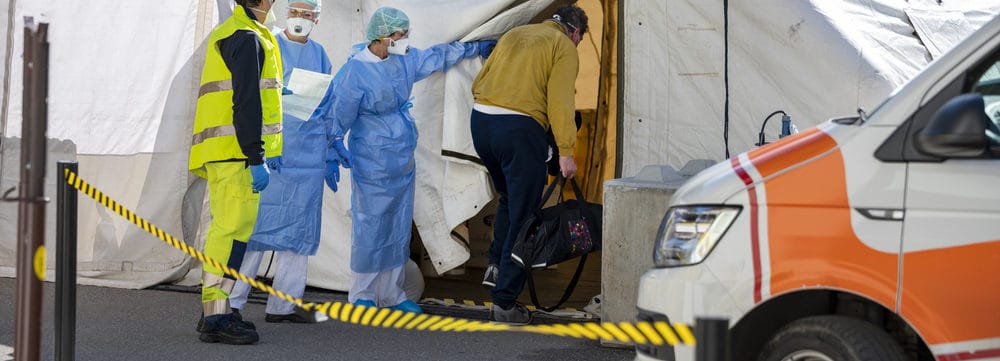Blog
Post COVID-19 Design Lessons

“Each day we watch in awe as doctors, nurses, and caregivers bravely take on the greatest public health challenge of our lifetime, putting their own health at risk to save countless lives. As parts of the country are reopening, we recognize that returning to normal will feel different.” James Albert, AIA, is a principal at Hord Coplan Macht (Baltimore)
The last couple of months have been tough on everyone. There was and continues to be areas where hospitals are overwhelmed. As a healthcare designer, it’s my duty to evaluate the data and help healthcare industry leaders make the best design decisions to prepare for the future. As James Albert mentioned in his statement, we recognize that returning to normal will feel different. The considerations listed below are some of the things healthcare designers can expect. Some may feel new but most reinforce the important themes that anchor healthcare design, infection control and flexibility.
Infection Control Will Stay Top Of Mind
In healthcare design, infection control is always a top priority. And, COVID-19 has justified its place at the top of the list. Hospitals across the globe now realize that they need to do even more. The infection control/prevention measures will stay top of mind, especially the considerations below.
Infection Control Considerations:
- Incorporate more germ-resistant materials
- Install design features and fixtures that can easily be cleaned and sterilized using harsh chemicals
- More health systems will use UV light and sterilizing mists to disinfect areas during turnover
- Private patient rooms will continue to trend
- The need for decentralized nurses stations will grow
- Design and layout plans will place emphasis on the placement of sinks and wash stations
- Waiting room configurations will drastically change as will other common areas such as the cafeteria
As mentioned above, most of these infection control considerations are already top priority but moving forward, they will bear even more weight in the allocation of dollars.
Increased Need for Flexibility
Hospitals across the globe now realize that they don’t have enough negative pressure rooms to deal with a global pandemic. This realization means an increased emphasis on flexibility and space allocation. Flexibility will take on more urgency as hospitals explore strategies and design options including converting off-site locations into temporary ICUs. It will also mean a greater need for adaptable/universal patient rooms. This new mindset will strengthen their ability to rapidly shift care.
Over the last few months, we’ve seen many herculean efforts made by hospitals to increase their capacity. In just 10 days, Reno’s Renown Regional Medical Center increased its ability to cope with the spread of COVID-19 by about 173 percent by refashioning a parking lot into a temporary facility. Read more…
Marie Wikoff is the creator of Wikoff Design Studio based out of Reno, Nevada. Her expertise in healthcare design has helped modernize healthcare organizations locally, regionally, and internationally, improving patient experience and outcomes. Her credentials include Evidence-Based Design Accreditation and Certification (EDAC), American Academy of Healthcare Interior Designer (CHID), the National Council of Interior Design Qualification (NCIDQ) and LEED AP. Contact Marie Wikoff







